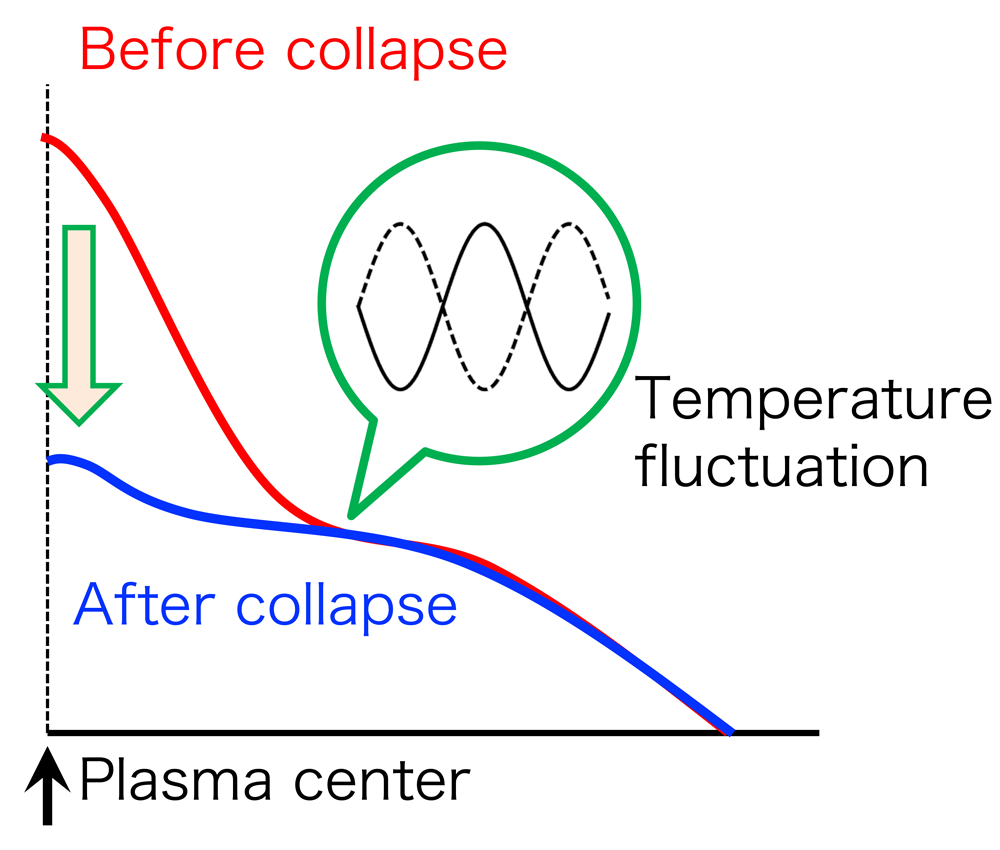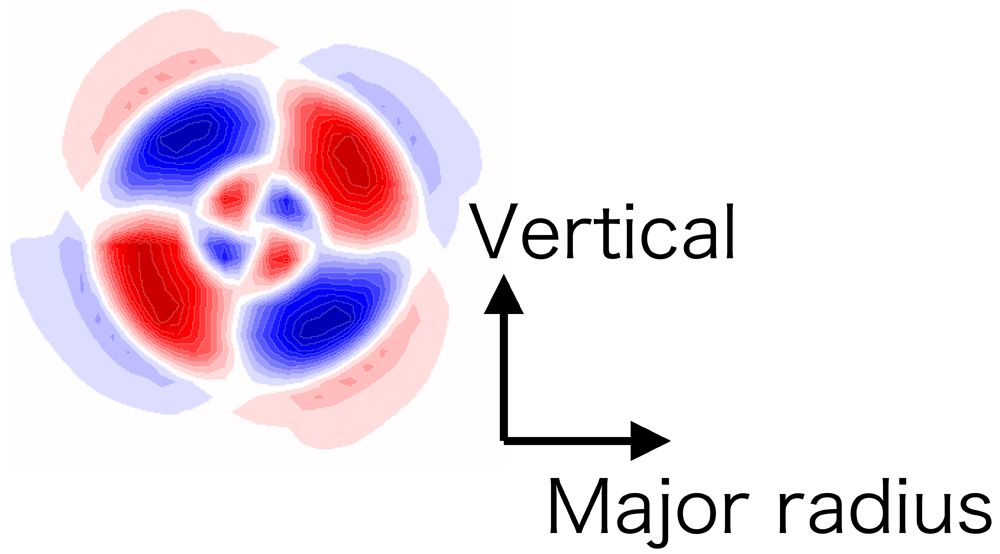Plasma central temperature profile collapse due to deterioration of nested magnetic tori
In magnetic fusion plasma, a high temperature plasma is confined by nested magnetic tori. When a current flows in the confined plasma, a deterioration of the nested tori can occur, which leads to a plasma central temperature profile collapse. A plasma temperature fluctuation during the plasma collapse event has been found that plays a leading role in the collapse. This fluctuation is a radial standing wave that has two nodes, rotating in the poloidal direction with a deceleration.
 |
 |
For realizing magnetically confined fusion, it is necessary to confine high temperature plasma that can be as high as a hundred million degrees Celsius. It is impossible to maintain such a high temperature plasma with a solid material, so magnetic field tori produced by external magnetic coils are used. When a current flows in the confined plasma, a deterioration of the nested tori can occur, which occasionally leads to a plasma central temperature profile collapse. In order to prevent such a phenomenon, it is mandatory to identify the mechanism of the deterioration of the nested magnetic tori.
A set of experiments was done to assess the plasma response to the externally driven plasma current by means of neutral beam heating devices and electron cyclotron resonance heating systems. In a certain operation scenario, a central temperature profile collapse occurs. In order to identify the cause of this event, plasma fluctuations in the temperature and magnetic field were diagnosed. As a result, the profile collapse event was found to be triggered by a coherent fluctuation having a radial standing wave that had two nodes, rotating in the poloidal direction with a deceleration. The two nodes eventually approach each other and later unify, leading to a deformation of the wave into a standing one, having a single antinode. After the disappearance of the nodes, the central temperature recovers. When the direction of the external current flow is reversed, the collapse event does not appear.
This study was based on a collaboration with Dr. M. Sanders (Technische Universiteit Eindhoven, The Netherlands).
The paper was published on February 18, 2020 in Nuclear Fusion, a journal on controlled thermonuclear fusion by the International Atomic Energy Agency.
